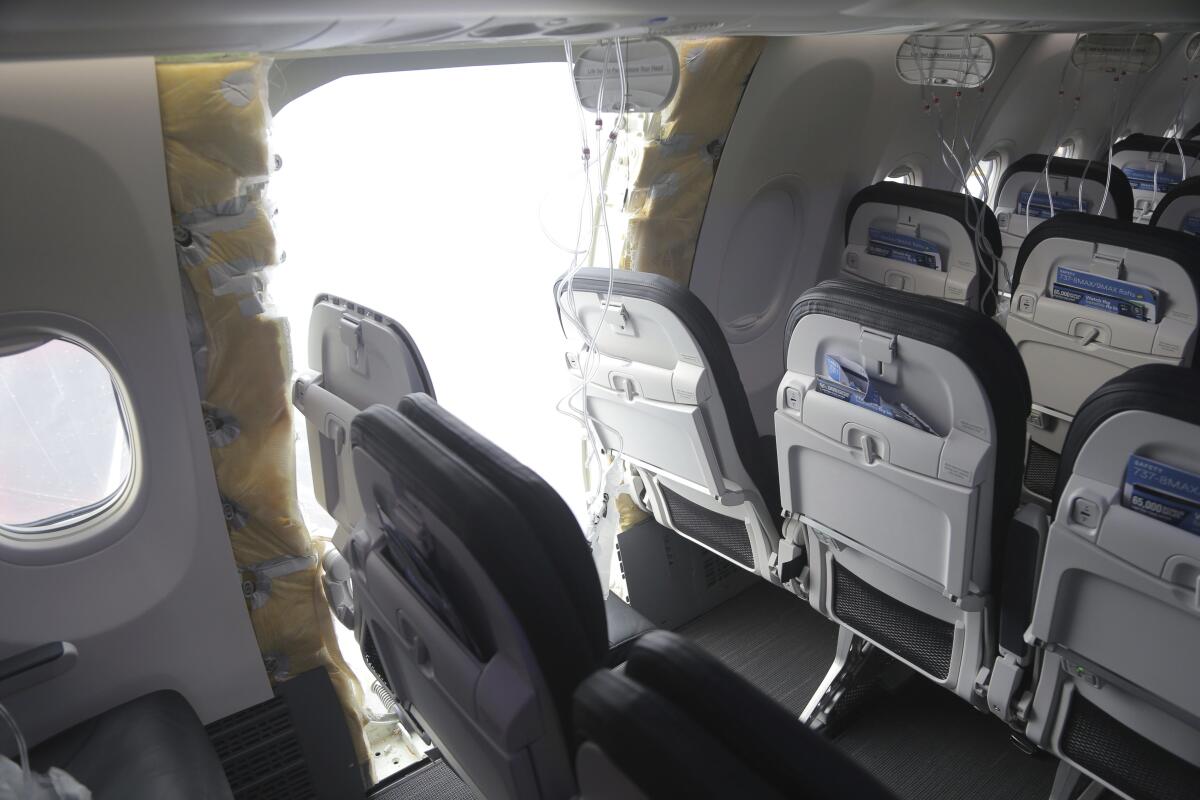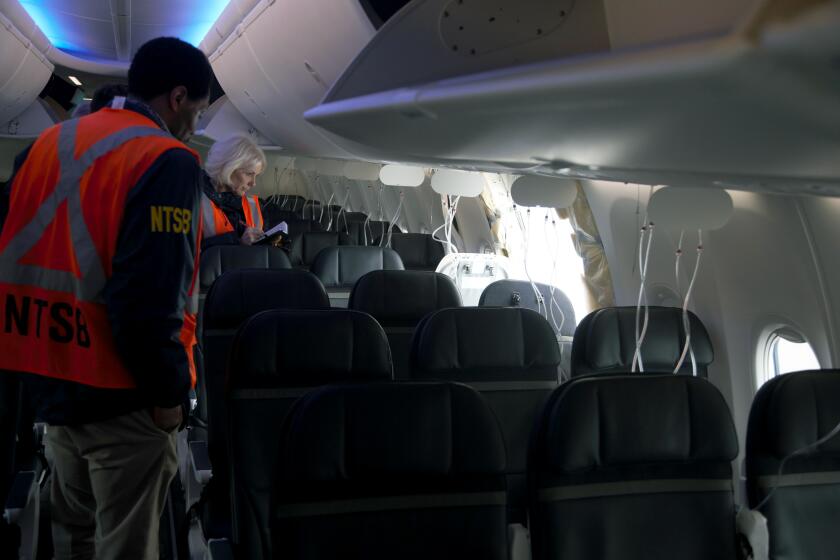U.S. to intensify oversight of Boeing, audit production after Alaska Airlines blowout

The Federal Aviation Administration will begin auditing Boeing’s aircraft production and increase oversight of the troubled company after a panel blew off an Alaska Airlines jetliner in midflight last week, the latest in a string of mishaps for the manufacturer’s marquee aircraft.
The agency’s move comes just a day after it announced an investigation into whether Boeing failed to make sure a fuselage panel that blew off was safe and manufactured to meet the design that regulators approved.
The FAA said Friday that it would audit Boeing’s 737 Max 9 jetliner production line, as well as the company’s parts suppliers, “to evaluate Boeing’s compliance with its approved quality procedures.”
The FAA statement said it also would look into safety risks from its own delegation of inspection authority to company employees and would consider moving those functions to an independent third party.
“It is time to re-examine the delegation of authority and assess any associated safety risks,” FAA Administrator Mike Whitaker said in the statement. “The grounding of the 737-9 and the multiple production-related issues identified in recent years require us to look at every option to reduce risk.”
The agency also will increase monitoring of 737 Max incidents that happen while the plane is in use.
Cuong Tran got his iPhone back after it was sucked out of the side of Alaska Flight 1282 when a door plug blew out. He got it back — but not his sock or shoe.
Boeing said Thursday that it would cooperate with the FAA investigation, which is focusing on plugs used to fill spots for extra doors when those exits are not required for safety reasons on Boeing 737 Max 9 jetliners.
One of two plugs on an Alaska Airlines jetliner blew out shortly after the plane took off from Portland, Ore., a week ago, leaving a hole in the plane. The cabin lost pressure, and the plane was forced to return to Portland to make an emergency landing. No serious injuries were reported.
After the incident, the FAA grounded all Max 9s equipped with the plugs, forcing Alaska and United to cut flights. The aircraft remain grounded while the National Transportation Safety Board and the FAA continue their investigation.
After the plane lost pressure, the FAA was told of other problems on the 737-9. Alaska and United reported finding loose bolts on door plugs that they inspected in some of their other Max 9 jets.
Answers to your questions about how the in-flight blowout of a plug on an Alaska Airlines plane could affect flights in the near future.
NTSB investigators said this week that they have not been able to find four bolts that are used to help secure the 63-pound door plug. They are not sure whether the bolts were there before the plane took off.
On Thursday, the FAA asked Boeing to respond within 10 business days and tell the agency “the root cause” of the problem with the door plug and steps that the company is taking to prevent a recurrence.
Earlier this week, Boeing CEO David Calhoun called the incident “a quality escape.” He told employees that the company was “acknowledging our mistake ... and that this event can never happen again.”
The door plugs are installed by Boeing supplier Spirit AeroSystems, but investigators have not said which company’s employees last worked on the plug on the Alaska plane that experienced the blowout.
The former Alaska Airlines pilot accused of trying to cut the engines of a Horizon Air plane in flight faces dozens of charges of endangerment.
The day after the blowout, the FAA grounded Max 9 jets, including all 65 operated by Alaska and 79 used by United Airlines, until Boeing develops inspection guidelines and planes can be examined. Alaska canceled all flights by Max 9s through Saturday.
The incident on the Alaska plane is the latest in a string of mishaps for Boeing that began in 2018, with the first of two crashes of Max 8 planes. The two crashes, in Indonesia and Ethiopia, more than four months apart, killed 346 people.
Justin Green, a lawyer who represents families suing Boeing over the Ethiopia crash, said he was happy to see the FAA ground the Max 9s so quickly after the Oregon incident.
Max 8 and Max 9 planes were grounded worldwide for nearly two years after the Ethiopia crash. Since then, various manufacturing flaws have at times held up deliveries of Max jets and a larger Boeing plane, the 787. Last month, the company asked airlines to inspect their Max jets for a loose bolt in the rudder-control system.
The issue of the FAA delegating inspection authority to Boeing employees was heavily scrutinized as Congress investigated the 2018 crashes.
More to Read
Sign up for Essential California
The most important California stories and recommendations in your inbox every morning.
You may occasionally receive promotional content from the Los Angeles Times.













